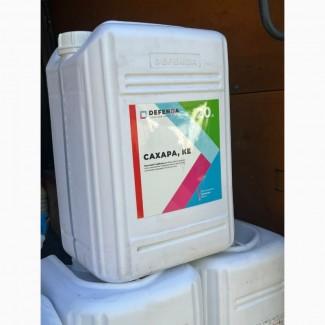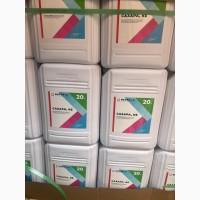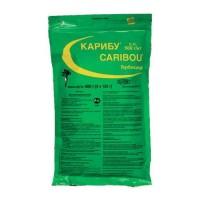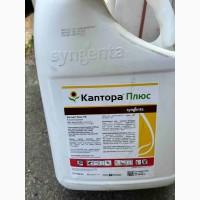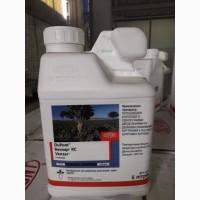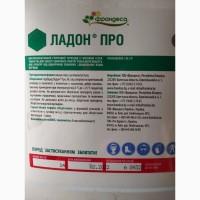/ Fertilizers and plant protection products / Herbicides / Sahara - a herbicide for the protection of sunflower crops...
Sell / buy
Sahara - herbicide for protection of sunflower, soybean and corn crops, Kyivska region.
Price6.25$
Region:all of Ukraine,
Kyiv region.
(Vyshhorodok)
Updated:
Sahara herbicide is a selective herbicide for the protection of cropssunflower, soybeans and corn.
Active substance - Acetochlor, 900 g/l
Manufacturer - Sidera
Action type - Selective
Method of introduction - Soil.
The original drug - Harness
Culture - Legumes,Corn, Sunflower
Type of controlling weeds - Dicotyledons, Cereals
The norm of the working solution is 200-300 l/ha.
Processing area - from 10 ha(//tractor-service.com)
Tare unit - 20 l, the price is indicated for 1 l.
Regulation of application;
Culture * Consumption rate l/ha
* Corn, sunflower, soy * 1.5-3.0
Soil herbicide Sahara refers to selective herbicides created to protect sunflower, soybean and corn crops. By using this herbicide immediately after sowing, you can protect the crop for up to 10 weeks against grass and some dicotyledonous weeds. The spectrum of action includes the following weeds: sorghum, plantain, sundew, ragweed, sorrel, sedge, white quinoa, sorrel, nightshade, sorghum,sorghum and thistles (seedlings from seeds).
Action of Sahara herbicide:
The effectiveness of the drug directly depends on the quality of soil treatment. The maximum effect is achieved in the presence of a fine-grained structure of the soil with well-crushed plant residues. In a dry spring, the drug is applied under harrowing or pre-sowing cultivation to a depth of up to 5 cm. After application, the herbicide remains in the upper soil layer, penetrates weed seedlings and stops the growth and division of weed cells. Sugar is not toxic to the following crops, as it completely decomposes in the soil. In the conditions of a cold and wet spring, suppression of sunflower crops is likely. Therefore, in order to reduce the probability of phytotoxicity of Sahara, it is desirable to reduce the rate, as well as to use it in a tank mixture with promethrin-based herbicides.
Active substance - Acetochlor, 900 g/l
Manufacturer - Sidera
Action type - Selective
Method of introduction - Soil.
The original drug - Harness
Culture - Legumes,Corn, Sunflower
Type of controlling weeds - Dicotyledons, Cereals
The norm of the working solution is 200-300 l/ha.
Processing area - from 10 ha(//tractor-service.com)
Tare unit - 20 l, the price is indicated for 1 l.
Regulation of application;
Culture * Consumption rate l/ha
* Corn, sunflower, soy * 1.5-3.0
Soil herbicide Sahara refers to selective herbicides created to protect sunflower, soybean and corn crops. By using this herbicide immediately after sowing, you can protect the crop for up to 10 weeks against grass and some dicotyledonous weeds. The spectrum of action includes the following weeds: sorghum, plantain, sundew, ragweed, sorrel, sedge, white quinoa, sorrel, nightshade, sorghum,sorghum and thistles (seedlings from seeds).
Action of Sahara herbicide:
The effectiveness of the drug directly depends on the quality of soil treatment. The maximum effect is achieved in the presence of a fine-grained structure of the soil with well-crushed plant residues. In a dry spring, the drug is applied under harrowing or pre-sowing cultivation to a depth of up to 5 cm. After application, the herbicide remains in the upper soil layer, penetrates weed seedlings and stops the growth and division of weed cells. Sugar is not toxic to the following crops, as it completely decomposes in the soil. In the conditions of a cold and wet spring, suppression of sunflower crops is likely. Therefore, in order to reduce the probability of phytotoxicity of Sahara, it is desirable to reduce the rate, as well as to use it in a tank mixture with promethrin-based herbicides.
|
Shop, contacts | |
Yuriy / feedback, info. / evaluation activities | |
|
Phone:
+38(xxxxxx
show
| |
All ads user ~1000 | |
Ad ID: #905008
(added by registered user, registration date: 2016-08-10)
Added / Updated: 10-15-2025 09:10 (current, until: 10-15-2026)
Permanent Ad Address:
Impressions / views for today: ?, total: ?
Similar ads
There are many interesting ones among them...
